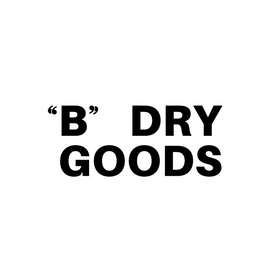[WilliWear] Christo (1935–2020) & Jeanne-Claude (1935–2009) & Smith, Willi (1948–1987)
Regular price
Unit price
per
"Christo 1985 - Pont Neuf sur la Seine, Paris" blue top and trousers, signed in ink. Designed by the groundbreaking American streetwear designer in collaboration with the important artists as part of their Pont Neuf Wrapped project, Smith's design was worn as a uniform by the 300 professional workers who completed the wrapping of Paris's historical bridge on September 22, 1985. In fine condition.
In 1985 Christo and Jeanne-Claude finally succeeded in a ten-year campaign to wrap the Pont Neuf. If the pink T-shirts designed for the artists' 1983 Miami Biscayne Bay project were right for scrappy South Floridians, the workers engaging visitors on the oldest bridge in Paris needed something more elegant. Smith designed a loose-fitting sky-blue smock, riffing on the iconic bleu de travail French work jacket, with matching trousers, the blue outfits playing off the tawny champagne of the bridge’s ruched material. Oversized pockets, hung low, could accommodate fabric samples and informational brochures. Like all of Smith’s clothing, it was comfortable and adaptable, for wearing with rolled sleeves or hiked legs or unbuttoned with an undershirt. It was a professionalizing uniform that allowed for maximum individuality. Interviewed at the time, Smith said: “I’m also looking forward to seeing if people can really work in the clothes. I could eventually make some real workwear. . . . Everyone likes the style so much I may put it on the spring line. It may be a new way to develop our artist-in-clothing project.” At one point, Christo showed him an advertisement in a Paris newspaper for one of the uniforms. The price: $1,000. Smith laughed and said, “Oh! Now I’m haute couture!”
“My whole theory about design is to try to solve some of these problems,” Smith once said. “To help people through clothing to solve the problem of getting dressed.” The concern wasn’t limited to celebrities on their way to galas. He had devoted himself from the start, in the early seventies, to finding solutions within the reach of almost anyone. One way was to make his designs available as patterns through services like Butterick and McCall’s, a practice that spanned his entire career. He valued people who sewed their own clothes at home, as members of his family had done in working-class Philadelphia. He explained: “To be able to go and buy the fabric. Already you have one exciting purchase—you bought beautiful fabric—and you get excited about that. You might take it home and may not even buy the pattern for two weeks later. Then you go and buy something else which you are equally excited about which is the pattern. And then the excitement of putting it together. It’s like a whole different way of dressing than buying clothes. (willismitharchive.com)

![[WilliWear] Christo (1935–2020) & Jeanne-Claude (1935–2009) & Smith, Willi (1948–1987)](http://bdrygoods.com/cdn/shop/files/Screen_Shot_2022-05-11_at_1.44.09_PM_{width}x.png?v=1705699352)
![[WilliWear] Christo (1935–2020) & Jeanne-Claude (1935–2009) & Smith, Willi (1948–1987)](http://bdrygoods.com/cdn/shop/files/Screen_Shot_2023-12-08_at_1.45.08_PM_{width}x.png?v=1705699352)